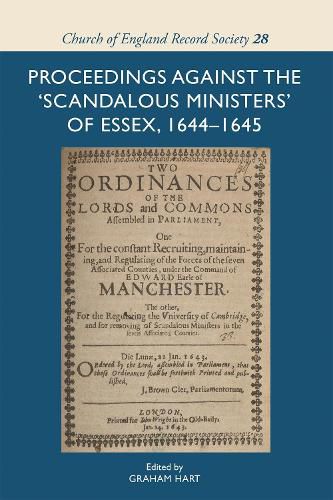Readings Newsletter
Become a Readings Member to make your shopping experience even easier.
Sign in or sign up for free!
You’re not far away from qualifying for FREE standard shipping within Australia
You’ve qualified for FREE standard shipping within Australia
The cart is loading…






During the 1640s Parliament carried out a purge of the parish clergy, ejecting over 2000 ministers from their livings. The proceedings of the purge in Essex in 1644-45 are recorded in two manuscripts: British Library, Additional MS 5829 (well known to scholars but not previously published), and University of Leicester Library, MS 31. The latter manuscript has only recently been recognised as a contemporary record of the purge of the clergy of Essex which was thought to have been lost in the eighteenth century. It is shown to be a sibling of the books which record similar events in Suffolk, Lincolnshire and Cambridgeshire.
These manuscripts illustrate the pressures which had built up within the Church at parish level during the 1630s and during the first Civil War in a county where puritanism was particularly strong. Comparison of the content of the two MSS enables a study of how the purge was conducted and its results. It shows that a significant number of the victims were able to retain their livings, and suggests how this came about.
$9.00 standard shipping within Australia
FREE standard shipping within Australia for orders over $100.00
Express & International shipping calculated at checkout
During the 1640s Parliament carried out a purge of the parish clergy, ejecting over 2000 ministers from their livings. The proceedings of the purge in Essex in 1644-45 are recorded in two manuscripts: British Library, Additional MS 5829 (well known to scholars but not previously published), and University of Leicester Library, MS 31. The latter manuscript has only recently been recognised as a contemporary record of the purge of the clergy of Essex which was thought to have been lost in the eighteenth century. It is shown to be a sibling of the books which record similar events in Suffolk, Lincolnshire and Cambridgeshire.
These manuscripts illustrate the pressures which had built up within the Church at parish level during the 1630s and during the first Civil War in a county where puritanism was particularly strong. Comparison of the content of the two MSS enables a study of how the purge was conducted and its results. It shows that a significant number of the victims were able to retain their livings, and suggests how this came about.